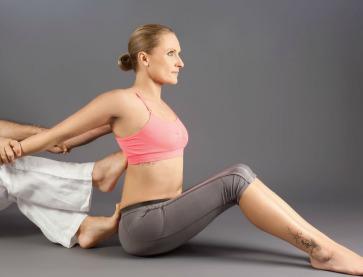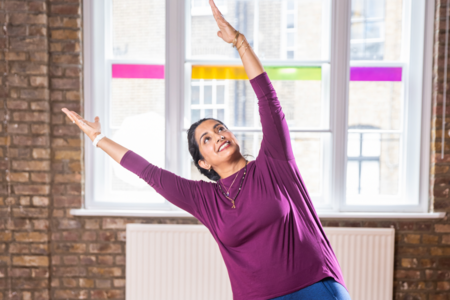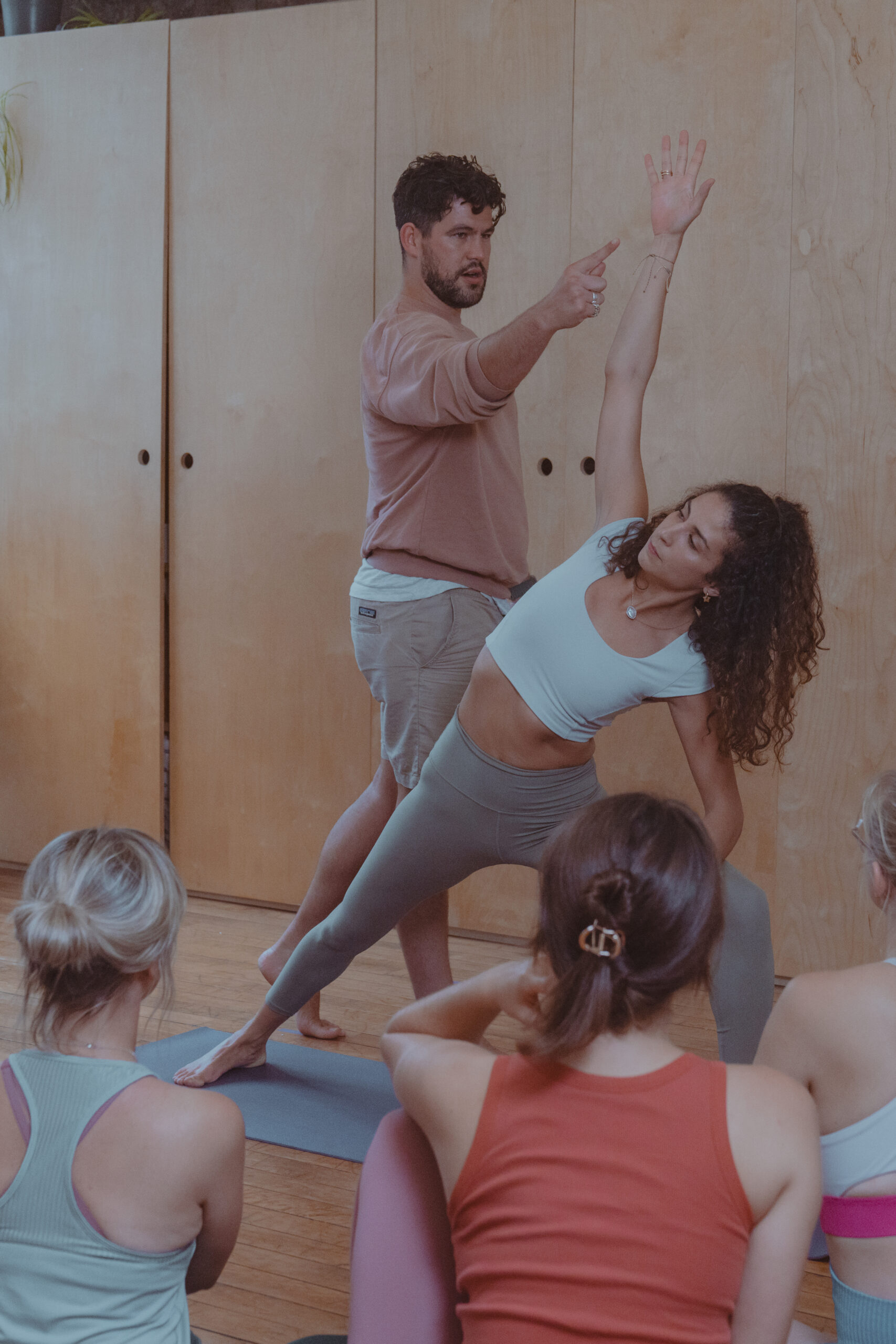Yogabodywork is a system of body work developed by Tim Goullet designed specifically to help yoga practitioners, martial artists and sports men and women. The system combines the diagnostic precision and treatment of osteopathy with the deep tissue techniques of Shiatsu and Thai massage. As an expert in this field, Tim has highlighted 5 of the most common problems encountered during yoga practice and how small adjustments can make a big difference.
stiff hamstrings
Our hamstring muscles (the ones at the back of the thigh) actually function as a physiological break to uncontrolled forward bending (so we don’t drop our head onto our shins!) and are primary muscles to bring us back up again – their evolutionary claim to fame along with the help of the powerful gluteal muscles!
Some people are born with stiff hamstrings and some people create them with their exercise and lifestyle. Walking more, sitting less in chairs and more on the floor is a good start to helping matters.
What’s important is that, if your hamstrings are particularly stiff, you don’t transfer stress to the lower back when forward bending. A standing forward bend performed by hanging forward with a rounded back and locked (sometimes hyperextended) knees with hands nowhere near the floor is a common problem. This position held in the hope that “one day” the hamstrings will magically lengthen another 50% actually places stress on the lower back structures. It over stretches the ligaments actually weakens the back muscles and most importantly, places strain on the intervertebral discs.
The alternative? BEGIN the forward bend with bent knees and seek to create contact between the lower ribs and thighs. This position is protective for the lower back. When hands can reach the floor, again there is less stress on the lower back. From this safe position, a gradual squeezing of the front thigh muscles (keeping the ribs in contact) will begin to challenge the hamstrings to lengthen in a position which is safe. The hamstrings are more likely to respond to a stretching stimulus in this position as they are not working to support the body weight. In a way, the nervous system is informing the hamstrings that they can relax. When the body is suspended as in the first example, the direction from the nervous system is completely the opposite – “don’t let go!”
hyper-mobility of the pelvic joints + ankles
Hyper-mobility can be addressed very well by intelligently changing the way you practice:
– Don’t stretch to your maximum – 70-80% will prevent you making matters worse
– Slow down your movements so your muscles need to work harder, thereby building “useable strength” – strength specific to the movements you are doing
– Hold postures for longer; for hyper mobile ankles, one legged standing balances are great; for pelvic joints, standing postures where the hips are open are excellent, for example warrior 2
pain in the lower back
Pain in the lower back has many causes. In yoga practitioners, it is often caused through excessive and repetitive back bending of a specific area of the lumbar spine – in other words, doing most of the pivoting from a single vertebral segment. This is most common in the “small” of the back around L2/3 which is the apex of the lumbar curve in most people. How can you help this problem?
– Firstly, reduce the extent of the whole movement and go back to basics
– Secondly, draw the tailbone downwards to lengthen the lumbar curve and the pubic bone upwards to engage the rectus abdominus
– Thirdly, try to integrate the thoracic curve into the back bend so it looks more like a globalised smooth arc then a local hinge
knee pain
Knee problems can really take the pleasure away from a yoga practice. Better prevention than cure!
If you feel ANY sensation in your knees while practising, it is best to back off. Go and see a qualified professional and have the problem assessed, preferably by someone who is familiar with yoga. Timing is important and may stop a minor problem becoming a major one.
Usually knee problems have their origin in the hips, especially with yoga practitioners. If you have a hip that is much stiffer than the other side (or 2 stiff ones if you’re unlucky!), be very careful in hip opening postures like baddha konasana, janu sirsasana and padmasana. Take things slowly and always back away from unusual sensations in the knee. The cartilage inside – the meniscus – does not like being twisted and can tear. Working towards these postures carefully and patiently will keep the surgeon away!
recurrent twinges in the hip + groin area
Intermittent, recurrent pains in and around the hip usually has a direct relationship to your spine. If your spine leans slightly to one side, that hip will get stiffer over time as its taking more weight. Good treatment will almost certainly help. From a technique point of view – check your squat in a mirror. If you tend to shift off to one side, you need treatment to balance the spine and hips.
If your knees tend to collapse inwards, you may find this is also happening in the classical lunge type asanas such as the front leg in warrior 1 and 2. This can be a source of groin pain. It is made worse the deeper the angle at the body and hip.
Some tips to avoid this issue:
– Rising up a bit in postures helps
– Pressing down the little toe helps to activate the lateral muscles of the hip and leg to restore good alignment.
– Golden rule: knees over toes!

Tim worked as a health and fitness consultant at Champneys Health Club after completing a Sports Science degree in 1987. A strong desire to understand the body a deeper level led him to study osteopathy in which he qualified in 1993. Tim then went onto teach at the British College of Osteopathic Medicine for 20 years, and also at the Clare Maxwell-Hudson School of Massage for 10 years. Tim has also invested many years in martial arts, reaching 5th Dan black belt in Karate Jutsu which he also teaches. Tim has practiced and assisted in various forms of yoga for 15 years and in 2005 co-authored the book ” Healing Yoga” with Liz Lark.
Tim works at triyoga Chelsea. For his schedule and more information, please click here.










